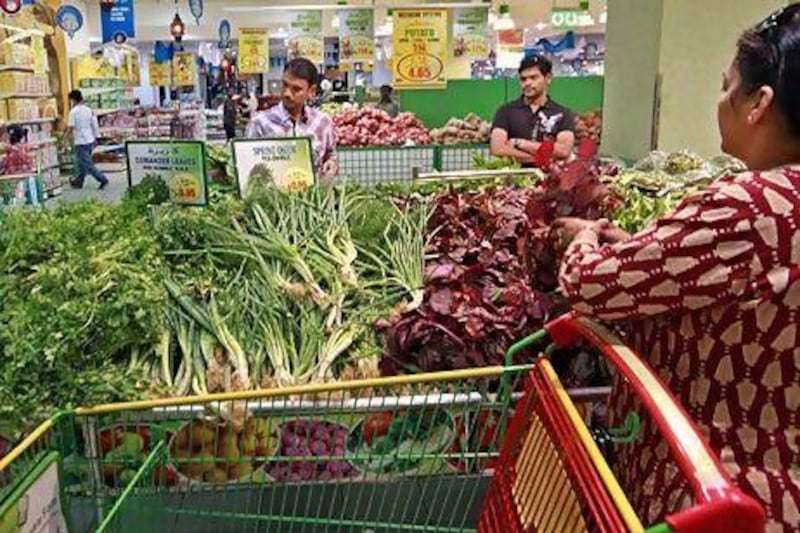Consumer prices in the UAE retreated last month to a three-month low as a drop in housing costs helped to offset the impact of US dollar weakness on the economy.
Inflation last month was running at an annualised rate of 1.3 per cent, data from the National Bureau of Statistics show. The rate slowed from 1.7 per cent in June.
"Consumer price inflation numbers continue to back up our view that the excess capacity in the economy is outweighing the impact of dollar weakness," said Liz Martins, the Middle East and North Africa economist at HSBC.
"Although the Ramadan effect could take prices higher, the impact is likely to be short term."
Helping to keep the overall inflation rate in check were accommodation costs and water and electricity bills, which dropped 1.6 per cent last month from June, the biggest monthly drop since December 2009. Housing and utility costs have the biggest weighting in the index.
Weakness within the housing market have pushed prices down by more than half from their peaks before the global downturn. Oversupply within the market may mean prices slip further still.
In contrast, inflationary pressures are more acute within the food and beverage part of the consumer price basket, the second-biggest component of the index. Prices in this sector rose 1.6 per cent last month, compared with June.
The increase comes despite attempts by the Government to cap prices. The Ministry of Economy agreed with retailers from May to fix the prices of 400 commodities at 70 outlets in various emirates until the end of the year. Its action was in response to global food prices hitting near record highs this year as a result of bad harvests and export bans from producer nations such as Russia.
Dollar weakness is another factor likely to aggravate inflationary pressures in the medium term. The UAE is vulnerable to a lower dollar as the dirham has a fixed exchange rate with the US currency.
The Emirates also imports about 85 per cent of its food needs and a large proportion of other commodities it uses.
Persistent concerns about the US budget deficit deadlock has already pushed the Dollar Index, which measures the dollar against other major currencies, down to near 12-month lows.
"The cost of living in the UAE will increase substantially in 2011-15 as the purchasing power of the dirham declines," Ayesha Sabavala, a UAE analyst at Economist Intelligence Unit, said last month.
Transport prices dipped 0.1 per cent last month from June, data showed.
Sultan Al Mansouri, the Minister of Economy, forecast last week that inflation would rise from 1 per cent to 1.5 per cent this year.
The muted inflationary environment represents a turnaround from 2007 and 2008, when a property market boom and high credit growth pushed inflation to double-digit levels.
Inflation eased to 0.9 per cent last year, its lowest annual level since 1990. The property downturn contributed to a brief period of deflation in the economy between part of 2009 and February last year as prices eased.





